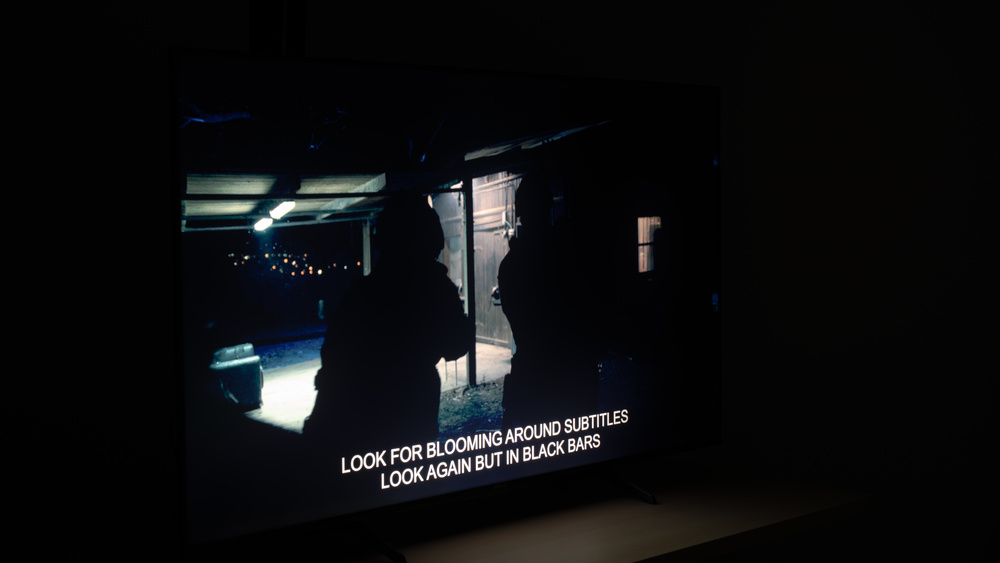Local dimming is a technique LED TVs use to improve contrast by dimming specific backlight zones in the darker areas of the screen, resulting in deeper blacks and better overall picture quality. It also plays a crucial role when watching HDR content, as it brightens highlights without washing out dark areas.
Although manufacturers once included local dimming only on higher-end TVs, the feature now appears in some budget-friendly models. However, lower-cost sets often use less refined implementations, which can lead to subpar performance compared to their pricier counterparts.
We don't evaluate local dimming with one singular test, but we instead test aspects of a TV's picture quality that are impacted by local dimming. In particular, we test local dimming through contrast, blooming, black uniformity, and lighting zone transitions. We begin in the TV's most accurate picture setting after calibration, then repeat the tests in Game Mode to see whether that setting affects local dimming performance.
Test results
Test Methodology Coverage
This test has been updated as part of our 1.11 test update. Compared to the 1.9 test bench, we've shifted the usage weights from blooming and zone transitions to contrast, so TVs without local dimming aren't scoring as high overall as they were in 1.9, which is the intended effect. We've also updated our blooming test to better represent real-world usage and to lessen the impact of the TV's viewing angle on the final score. Learn how our test benches and scoring system work.
| 1.6 | 1.7 | 1.8 | 1.9 | 1.10 | 1.11 | |
|---|---|---|---|---|---|---|
| Updating Blooming Methodology | ❌ | ❌ | ❌ | ❌ | ❌ | ✅ |
| Modified Contrast Scoring | ❌ | ❌ | ❌ | ❌ | ❌ | ✅ |
When It Matters
Local dimming boosts contrast by dimming specific backlight zones in dark areas of the screen. As a result, TVs that implement it effectively stand out most in dimly lit environments, where viewers can more easily see the improved black levels. However, in bright rooms, the difference is less noticeable because ambient light makes blacks appear raised, thus reducing perceived contrast.
Local dimming typically enhances picture quality but can still introduce drawbacks such as reduced detail in shadowy areas or blooming around bright objects. Nowadays, it rarely makes the image worse than it would be without the feature. Even budget-friendly models, like the Hisense U6N, generally perform better with local dimming enabled. However, some models—especially edge-lit TVs like the LG QNED85T—deliver mixed results when local dimming is active. If you value this feature, review our test results carefully to ensure you choose a TV that implements local dimming well.
Our Tests
We don't have one singular test for local dimming. Instead, we test aspects of the TV that are impacted by it, namely contrast, blooming, black uniformity, and lighting zone transitions. We test these in the TV's most accurate post-calibration picture mode and in Game Mode.
Contrast
Local dimming's most obvious impact is on the TV's contrast. Measuring contrast, one of the most important aspects of picture quality is also one of our simplest tests. We begin by placing the TV in its post-calibration settings. Next, we display our custom-designed real-scene test image and adjust the backlight so the white area in the center of the cave measures about 200 cd/m², which serves as the white luminance measurement for our contrast calculation.
We chose 200 cd/m² for two reasons: any TV on the market can achieve it, ensuring comparable results, and it reflects a typical brightness level in a moderately lit room. Afterward, we select the local dimming setting that provides the best possible image quality.

Next, we measure the light output at the four corners of the scene and take one additional measurement to the right of the cave entrance. We then average these five readings to find the black luminance level for our contrast calculations. Finally, we divide the white luminance by the black luminance to determine the contrast ratio. We run this test twice: once to measure the panel's native contrast and once with local dimming enabled to see how much it improves performance.
Blooming
We test the TV's blooming performance by taking a photo with the camera angled between +40° and +50° horizontally and +4° to +6° vertically. We then assign a subjective score based on how blooming appears in real-world usage. When choosing the representative photo, we focus on how harsh the blooming looks, not just how widely it spreads. Extremely bright highlights that abruptly cut off in dark scenes can be more distracting than a gradual brightness gradient.
Below, you can see how blooming affects the Hisense U6N, with the effect being most visible around the subtitles. Note the angle at which the photo was taken—this angle best represents the real-world impact of blooming when watching darker content in a completely dark room.

Local Dimming Video
Finally, we test lighting zone transitions using our local dimming video to see how well the backlight adjusts when a moving bright image appears in a dark scene. We typically showcase the maximum local dimming setting in this video, but we also test every available setting and settle on the one that performs best.
When analyzing this video, we pay special attention to Zone Transition Visibility and Speed. As a bright object moves between dimming zones, we look for obvious blooming or multiple zones lighting up at once. Such artifacts can create a distracting glow around bright objects, like street lamps or stars. We also evaluate how quickly each zone responds: does the new zone illuminate too early, and how long does the old zone stay lit on the screen?
Number and Size of Dimming Zones: With local dimming, clusters of LEDs—called zones—dim or brighten in unison. A TV with many small zones can better control each zone's effect on the image, while fewer zones that cover larger areas might lead to more blooming. By observing how much space around the bright dot remains lit at any moment, you can estimate the zone size. We also use this video to count the number of zones the TV has.
In the example video below, recorded on the LG QNED85T, you can clearly see its lighting zone transitions because this TV only uses six edge-lit dimming zones. As the bright object shifts from one zone to another, you'll notice a bright band of light whenever a new zone lights up. You'll also see the size of each zone, as it remains lit behind the moving object until the next zone activates.
In contrast, the footage below shows the Hisense U8N, which uses a more effective local dimming feature. Although some haloing appears, you won't see the distracting bands of light found on the edge-lit LG QNED85T.
Black Uniformity
Local dimming also affects a TV's black uniformity. A well-implemented local dimming feature often reduces—or even eliminates—clouding issues that might otherwise be visible. However, this usually comes at the cost of increased blooming around bright elements, so we monitor backlight bleed and blooming closely.
In some cases, such as with the LG QNED85T shown below, local dimming can actually worsen uniformity. Instead of a uniformly cloudy image, there's a bright band of light surrounded by darker blacks.

Backlight
We also check each LED TV's backlight type, though it doesn't affect our scoring. Direct or full-array backlighting places LEDs across the entire area behind the LCD panel. Edge-lit TVs, like the LG QNED85T, only position LEDs along the sides of the screen—usually two opposing edges—and rely on those LEDs to light the entire display. Because these different approaches affect local dimming performance, we consider the results important.


We label a TV as "Full-Array" if it uses direct/full-array backlighting and supports local dimming (like the Hisense U8N). We call it "Direct LED" if it's direct-lit but lacks local dimming (like the TCL Q5/Q550G). Because direct-lit TVs place LEDs behind the entire screen, their local dimming feature can more effectively control each zone and easily turn off specific areas.
In contrast, edge-lit TVs like the LG QNED85T can't dim LEDs located directly behind the relevant parts of the screen, so edge-lit local dimming tends to be less precise. These TVs usually provide minimal contrast improvements and can cause entire vertical or horizontal zones to illuminate when a bright object appears, as seen earlier. Although most TVs now use full-array local dimming, some still rely on edge-lit panels. Many monitors also use edge-lit local dimming; this example shows how it lights multiple zones at once.
Contrast And Dark Details In Game Mode
As part of our Test Bench 1.9 update, we introduced the "Contrast and Dark Details in Game Mode" test, which replaces our previous "Local Dimming in Game Mode" test. Although this new test is conducted on all TVs—including those without local dimming—it serves to emphasize how local dimming impacts performance or image quality in Game Mode. With this test, we replicate our standard local dimming tests, but we switch the TV to Game Mode and enable its variable refresh rate feature if supported. We then see if this impacts performance or image quality in any way. While most TVs deliver similar local dimming results in Game Mode, certain models show more noticeable blooming or zone transition issues in this mode.
Additional Information
Why Local Dimming Exists
LCD panels rely on LED backlights, so the panel itself cannot block all light that passes through. Even in a black scene, some light escapes, making blacks look gray. To mitigate this shortcoming, many LED TVs use local dimming to dim the backlight in darker portions of the screen. This approach darkens shadowy areas while preserving brightness in other parts of the image, which boosts contrast between dark and light elements.
Downsides Of Local Dimming
No local dimming feature on an LED TV is flawless, and it can introduce minor problems, such as:
- Light blooming around bright objects
- A trail of light following fast-moving bright objects
- Loss of detail in dark areas
- Unintended dimming of certain screen areas (rare)
- Uniformity issues, like fluctuating brightness across the screen
Local Dimming On OLEDs
Because OLEDs use self-emitting pixels and don't require a backlight, they don't need local dimming. OLEDs inherently achieve the same goal by turning off individual pixels to achieve perfect blacks. As a result, we score OLEDs a perfect 10 for blooming and lighting zone transitions since they produce deep blacks next to bright highlights without any blooming, and they have no lighting zones.
How To Get The Best Results
Some TVs offer multiple local dimming settings. Lower settings typically dim the backlight less, resulting in weaker contrast improvements but fewer side effects, such as blooming. Higher settings dim more aggressively, which can deepen blacks but also emphasize issues like blooming. Local dimming preferences are subjective, so experiment with different settings and choose the one you prefer. If local dimming matters, look for a TV that scores highly in this category.
Other Notes
- Contrast/Brightness Settings: These controls tweak white and black levels to improve picture quality, but they don't directly affect local dimming. Some TVs label backlight control as "Brightness," which changes the overall screen brightness but not how local dimming functions.
- HDR: A well-implemented local dimming feature complements HDR by further brightening highlights. Learn more about HDR.
Conclusion
Local dimming improves LED TVs' contrast ratios by selectively dimming or turning off backlight zones, making blacks appear deeper while keeping highlights bright. Although it can cause blooming around bright objects or light up large zones for small highlights, most modern local dimming systems effectively enhance picture quality in dark scenes. Only a few lower-end TVs still exhibit major issues with their local dimming implementations.